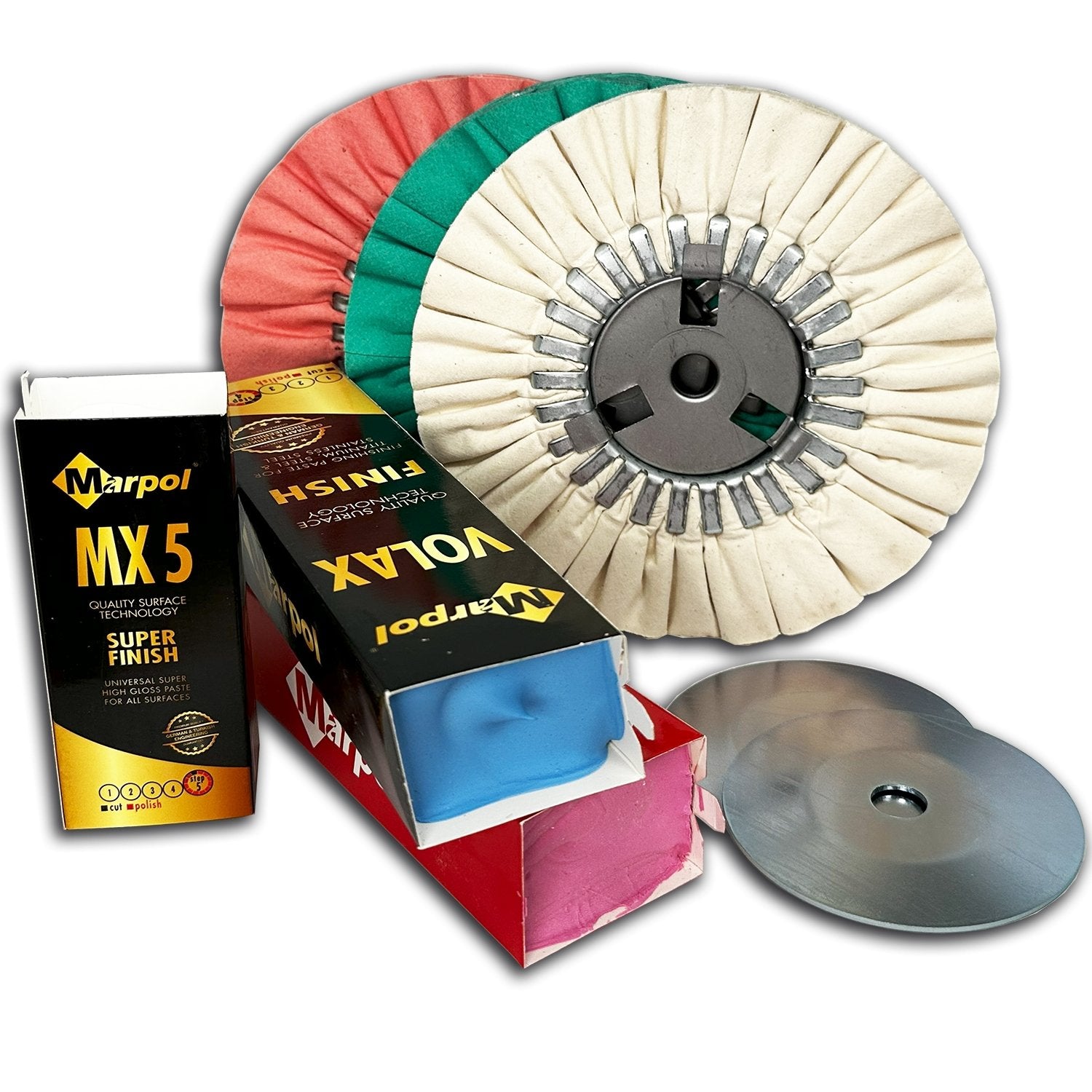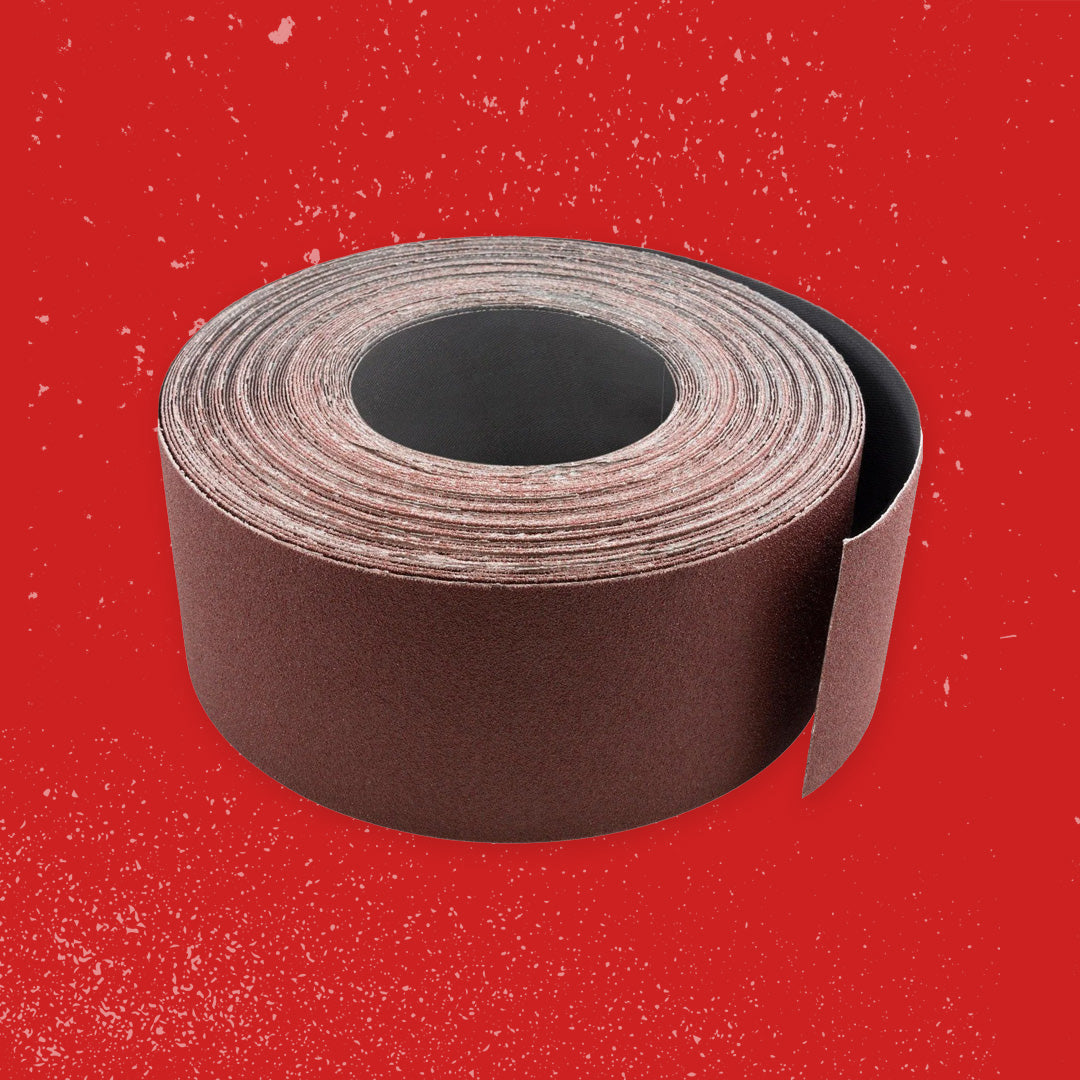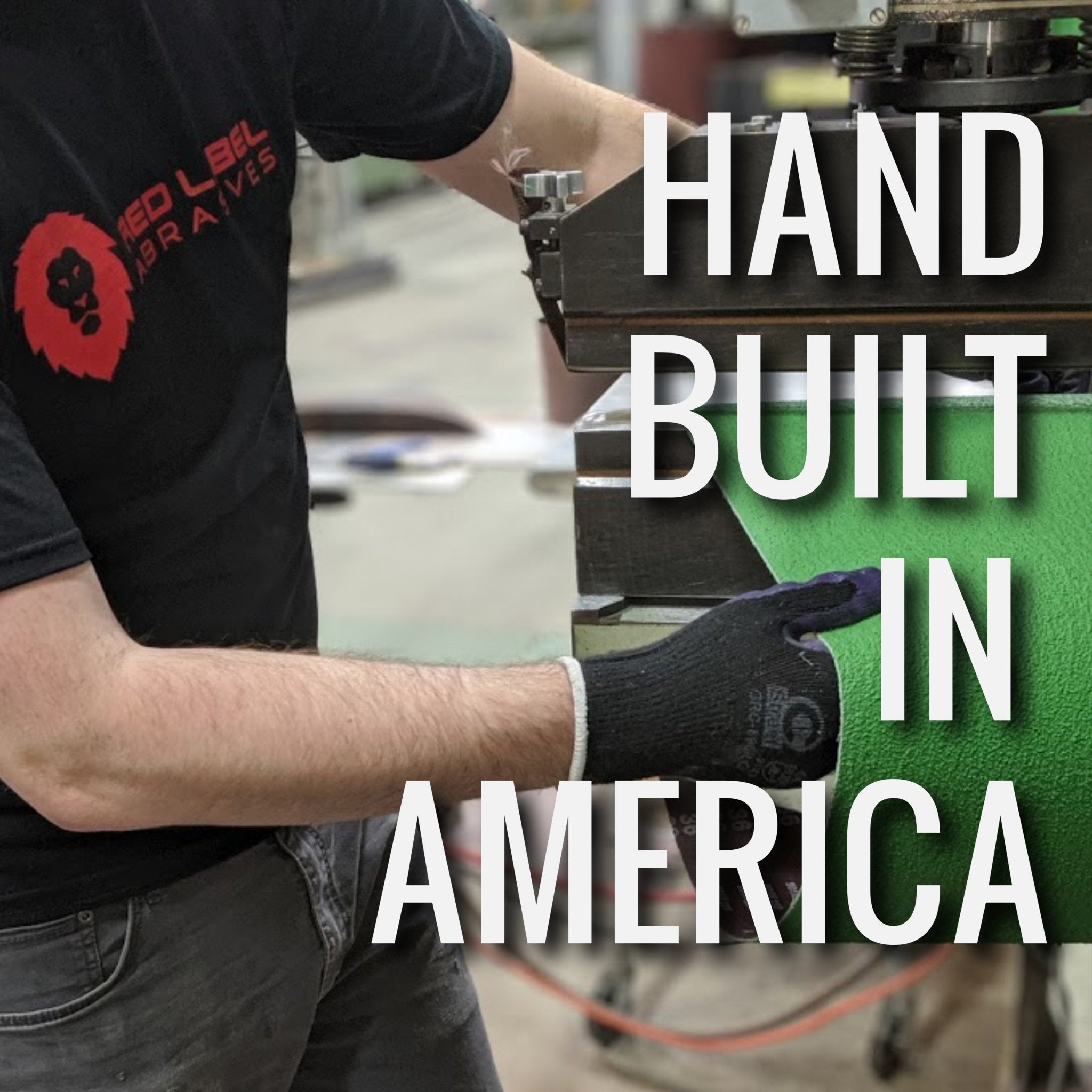Your Cart is Empty
Free Shipping over $150 (Excludes Oversized Products)
Free Shipping over $150 (Excludes Oversized Products)
Sanding Belts
Sanding Discs

What Is A Disc Sander & What Is It Used For?
by David Kranker 6 min read

Quick Summary
Disc sanders are a versatile asset to workshops and facilities of all sizes. There are several different types, including stationary disc sanders, portable disc sanders, and combination belt and disc sanders. Choosing the best one for your needs will depend on your required performance speed, the materials you work with, and your budget.
Disc sanders are power tools that use rotating sanding discs to grind and smooth a wide range of surfaces, including wood, metal, plastic, and composites. This detailed machine, which consists of a base and a table in front of the rotating section, is one of the most commonly used power sanders in woodworking.
If you’re new to woodworking or have never operated a disc sander before, you probably have questions. How does it work? What is it used for? In this article, the team at Red Label Abrasives goes over the different types of disc sanders, their components, and how you can use them to increase efficiency and excellence in your projects.
What Are The Different Types of Disc Sanders?
Disc sanders come in different types, each one especially suited for a particular process or project type. To help you determine which one is most suitable for your needs, we’re outlining the most common types below.
Stationary Disc Sanders
Stationary disc sanders are large and powerful machines designed for heavy-duty sanding tasks. They are often mounted on a bench or stand, which provides a stable and secure work surface.
These sanders have a large disc that rotates at a high speed, (some go as high as 12,000 RPM, allowing for quick and efficient sanding. The discs range in size from 5” to 30” in diameter, and are typically made from abrasive materials like aluminum oxide, silicon carbide, zirconia, and ceramic.
One of the benefits of using a stationary disc sander is its ability to handle large workpieces. The larger disc allows for a greater sanding surface area, which can reduce the amount of time needed to complete a job. Stationary disc sanders also typically have more powerful motors than portable disc sanders, which allows them to handle tougher sanding tasks.
Portable Disc Sanders
Portable disc sanders are handheld sanding machines that are lightweight, compact, and easy to maneuver, making them ideal for DIY projects and home workshops. They typically have a smaller disc size than stationary disc sanders and are powered by electricity, either from a corded power source or a rechargeable battery.
One of the key advantages of portable disc sanders is their versatility. They can be used for a variety of sanding tasks, including:
- Removing paint and rust
- Smoothing rough surfaces
- Shaping wood, metal, or plastic
A portable disc sander is also relatively inexpensive and takes up less space than a stationary disc sander, making it a good choice for DIY enthusiasts. However, they may not be as suitable for industrial-grade applications.
Combination Belt and Disc Sanders
This type of sander combines a disc sander and a belt sander in one unit. They typically consist of a flat worktable with a sanding belt mounted on one side and a sanding disc on the other. The ability to switch between the two also makes it easier to work on different types of surfaces and shapes.
Overall, combination belt and disc sanders are a great option for those who need a versatile and flexible sanding tool that can handle a range of tasks. However, they may not always offer the same level of performance as a dedicated stationary belt sander or disc sander.
Tabletop Disc Sanders
Tabletop disc sanders are small, compact machines intended for use on a tabletop or workbench. One of their main advantages is their compact size. They take up less space than larger stationary disc sanders, making them ideal for home workshops or small workspaces. They are also relatively affordable and easy to use, making them a great choice for beginners.
Random Orbital Disc Sanders
Random orbital disc sanders use a circular sanding disc to remove material. These sanders are designed to rotate the sanding disc in a random, elliptical motion while simultaneously spinning it on its axis. This creates a swirling sanding pattern that reduces the risk of creating visible scratches or marks on the surface being sanded.
Random orbital disc sanders are particularly effective at removing paint, varnish, and other finishes from wood, metal, or plastic surfaces, as well as smoothing and shaping surfaces. Their sanding discs are usually attached using a hook-and-loop system for easy and quick changing during projects.
What Are Disc Sanders Used For?
Disc sanders are used for a variety of sanding tasks. Depending on the abrasive, they can shape, strip, smooth, and polish materials like wood, metal, plastic, fiberglass, and more. You often see them used in the industries below.
Here are some examples of industries where disc sanders are commonly used:
- Woodworking:Woodworkers use disc sanders to shape and smooth wooden objects, remove old finishes, and prepare surfaces for painting or staining.
- Metalworking: Disc sanders are also used in metalworking industries to shape and sand metal objects, remove rust or old finishes, and prepare surfaces for painting or coating.
- Automotive:In the automotive industry, disc sanders are used for bodywork and paint preparation, such as removing old paint or smoothing out dents and scratches.
- Construction:Disc sanders are used in construction industries for sanding drywall, preparing floors surfaces for staining or varnish, and shaping or smoothing out surfaces on building materials.
- DIY/Home Improvement: Disc sanders are also popular among DIY enthusiasts and home improvement projects for sanding and finishing projects around the house, such as refinishing furniture, smoothing out walls or preparing surfaces for painting.
Advantages of Using a Disc Sander
For sanding and finishing tasks, disc sanders have several advantages over hand sanding. Here are some of the main benefits:
- Speed: Disc sanders allow you to sand and finish surfaces quickly and easily. This can save time and increase productivity.
- Control: With disc sanders, you control the speed and pressure of the abrasive disc, making it easier to achieve the desired results.
- Precision: These machines are designed to provide precise and even sanding, which is essential for achieving a high-quality finish.
- Consistency:Disc sanders provide a consistent finish across the surface of your workpiece, reducing the risk of uneven sanding or scratches.
Whether you're a professional woodworker, metalworker, or DIY enthusiast, a disc sander can help you achieve the results you need with greater speed, precision, and control.
Tips for Choosing the Right Disc Sander
If you want to get the best results from your disc sander, you need to choose the right one. Here are some factors to consider before you make the investment:
- Application:What sanding tasks will you be performing? For example, a stationary disc sander may be better for heavy-duty sanding tasks on large workpieces, while a random orbital disc sander may be better for fine finishing work on smaller surfaces.
- Workpiece Size: Consider the size of the workpiece you'll be sanding and choose a disc size that will provide enough coverage without being too large or unwieldy.
- Power and Speed: You should consider the power and speed of the disc sander to ensure that it can handle your sanding needs. A higher wattage or RPM can provide greater sanding power and speed, but may also be more expensive.
Pro Tip:Look for a disc sander with a dust collection system to keep your work area clean and minimize exposure to dust and debris. This is particularly important if you're working with materials that produce a lot of debris, such as wood or metal.
Improve Your Disc Sanding With Industrial Grade Sanding Discs
Disc sanders are a versatile and powerful tool that can help you achieve high-quality sanding and finishing results on a variety of materials. Whether you're a professional woodworker, metalworker, or DIY enthusiast, they are a valuable tool to have in your workshop or toolbox. The key is to invest in one that meets your specific needs and helps you achieve the results you're looking for.
Our Featured Disc Sanding Products
At Red Label Abrasives, we manufacture industrial-grade sanding discs engineered to meet the demanding needs of both large manufacturers, and smaller shops and hobbyists. If you’re not sure which abrasive you need, our technicians would be pleased to help. For more information or to place an order, please call 844-824-1956 or fill out our contact form today.
ABOUT THE AUTHOR
David Kranker is a writer and creative maker who has been covering the abrasive industry on the Red Label Abrasives Blog since 2020. David spends his time continually researching sanding techniques to provide readers with the latest and greatest information. In his free time, David utilizes abrasives for many different home and auto projects at his home in Delton, MI.
Our Most Popular Abrasives

EdgeCore Ceramic Sanding Belts

EdgeCore Ceramic Flap Discs

Buffing Kit
Shop By Product Category





Why Choose Red Label?











